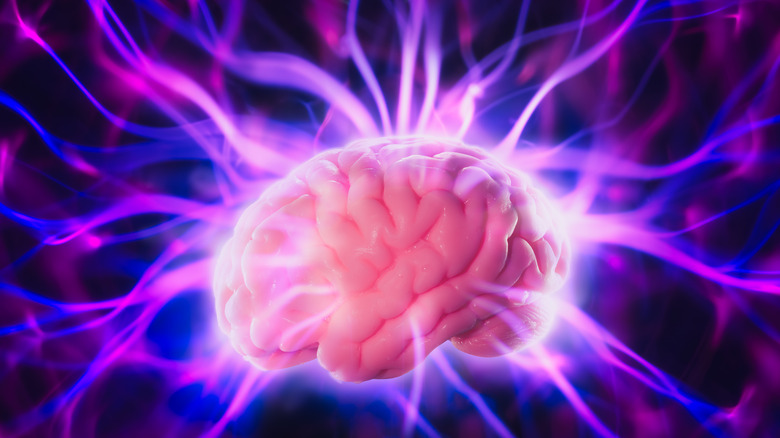How To Tap Into Healing Brain Waves
Believe it or not, the neurons in your brain communicate with each other by producing electrical pulses known as brain wave activity. According to Healthline, there are five different types of brain waves: alpha, beta, delta, gamma, and theta, all of which function differently. For instance, theta waves can occur during the light phase of sleep or when you're in a relaxed state of wakefulness. Also described as "autopilot," an influx of theta waves can make you feel tired or lethargic when you're awake. Theta brain waves are also known for helping you process information and retain memories.
Brain waves can be measured using an electroencephalogram (EEG). An EEG is a test that can detect the electrical activity in your brain and record brain wave patterns. These patterns are measured in cycles per second — a unit of measurement known as hertz (Hz), per Healthline. Compared to alpha waves, theta waves are much slower and have a frequency of 4 to 8 hertz. However, they are slightly faster than delta waves, which can measure as low as 0.5 hertz. Out of these five different brain waves, there is one you can tap into for substantial health benefits.
You can manipulate theta waves through meditation
According to experts at MindBodyGreen, however, theta waves can do more than just process information. They can also be manipulated to help you feel less stressed and anxious. As it turns out, a 2015 systematic review published in Neuroscience & Biobehavioral Reviews found that mindfulness meditation — the practice of being present in the moment — was associated with higher levels of theta waves, which can help you feel more calm and relaxed.
Dr. Ilene S. Ruhoy, a board-certified neurologist and medical director for the EDS/Chiari Center at Mount Sinai South Nassau Hospital in Hewlett, New York, told MindBodyGreen that you can actually manipulate theta waves in order to facilitate the healing benefits of REM sleep by practicing deep meditation or auditory mindfulness, which includes listening to soothing and rhythmic sounds. These two meditation techniques can help you transition between a state of wakefulness and sleep, causing drowsiness and allowing your body and brain to regenerate.


